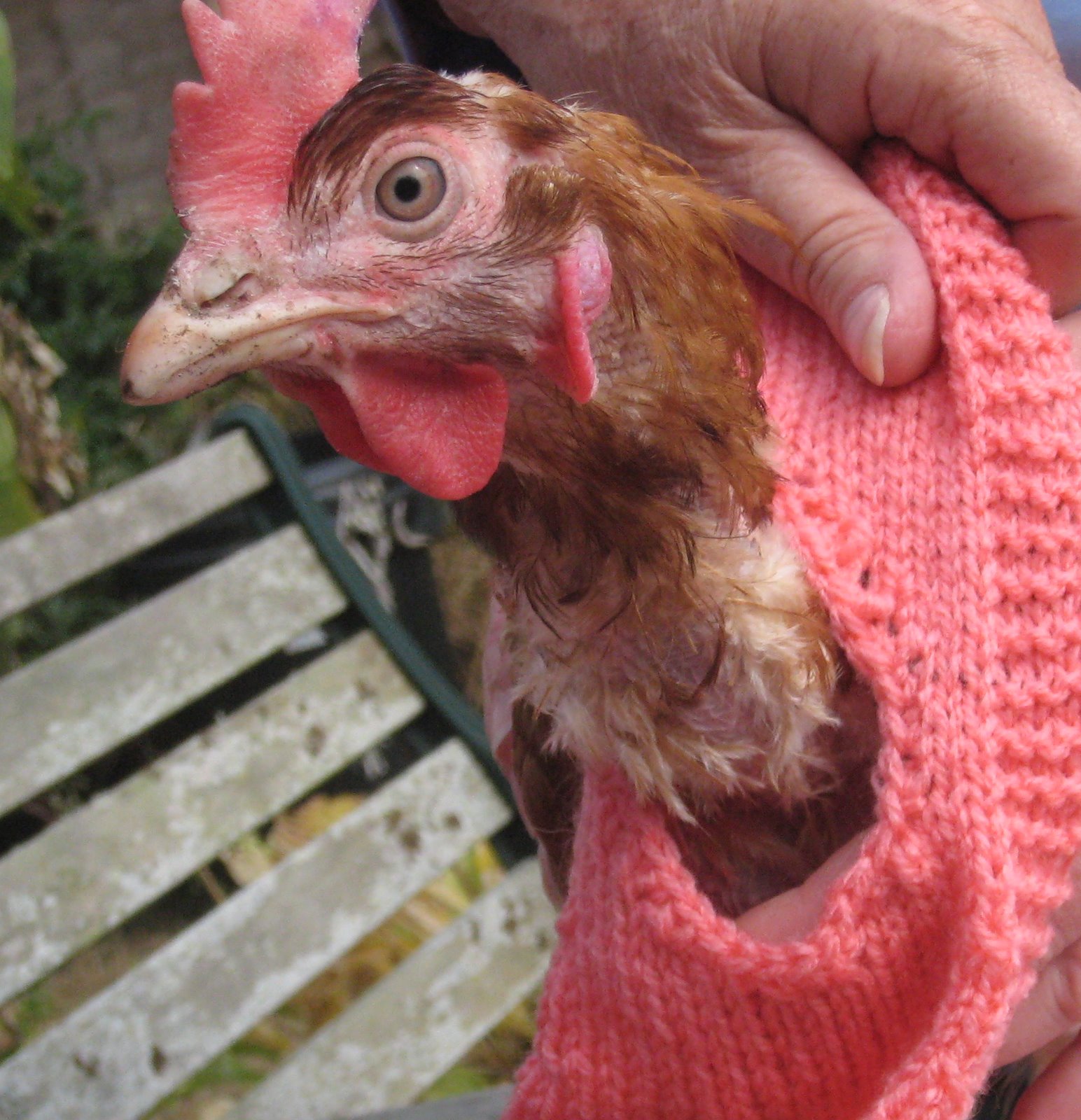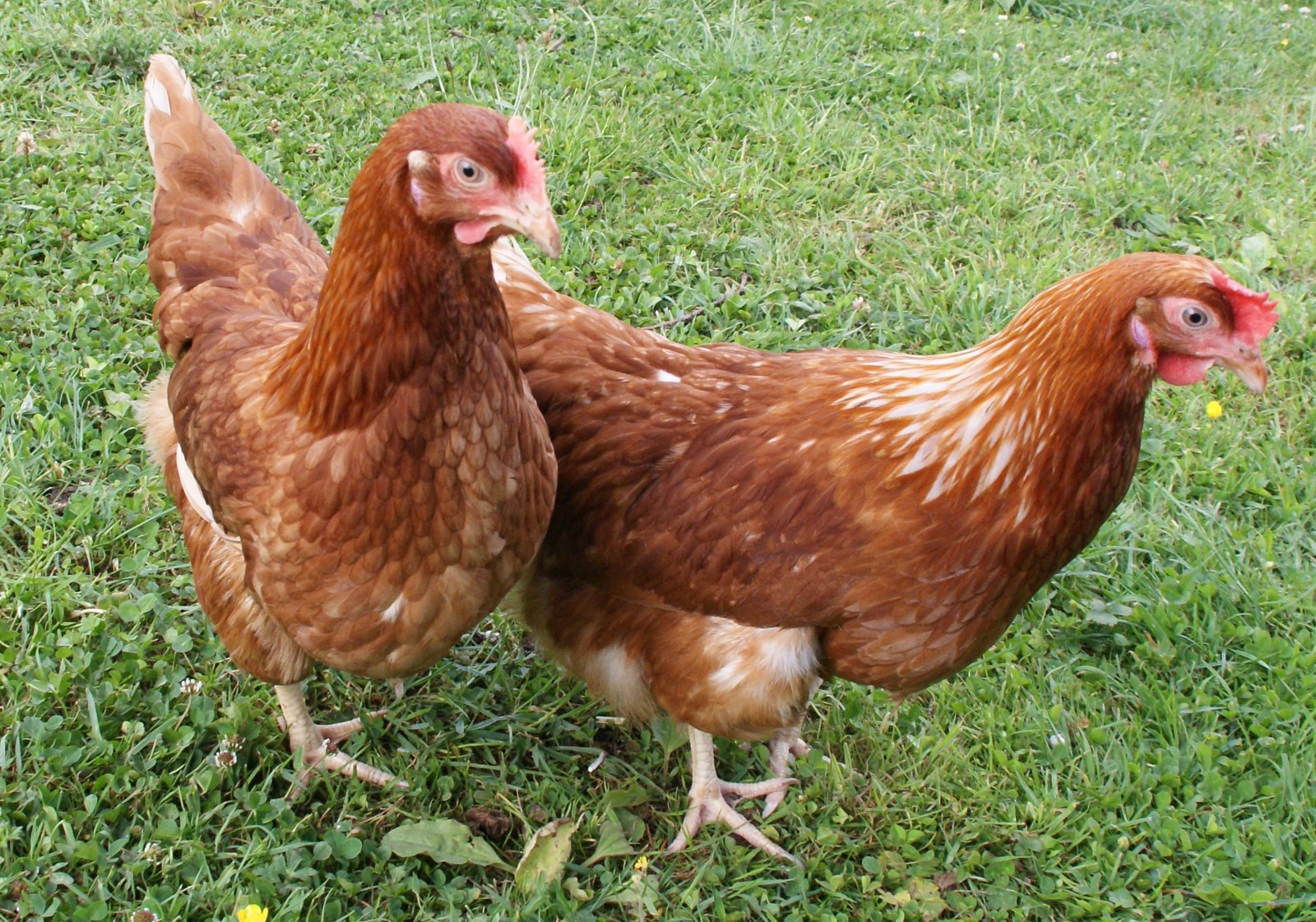Keeping a handful of chickens in the garden has increasingly become the “in thing” in recent years. We too keep a few hens, and have just acquired two new ones following the loss of the second of our original “ex-batts” last month. I thought you might be interested in our experiences.
I had promised Judy a chicken coop one Christmas, and fulfilled my obligations by ordering a Chicube at RHS Hampton Court Flower Show a couple of years ago. I had done a fair bit of research into coops, and the Chicube seemed well made, with a convenient and hygienic plastic liner. We ordered one in oak, complete with wire mesh run, etc.. I’m sure we said “no thank you” to the offer of hens to complete the package, but when the lady from Chicube called to arrange delivery it transpired that “….oh, yes, you’re down for chickens.” Sly one, Judy ![]() !
!
So it transpired we started out with three “ex-batts” – Patience, Cordelia and Esther. The good things about ex battery hens are:
- they’re vaccinated against many common ailments
- they’re extremely friendly and sociable, and full of character
- they lay eggs almost every day!
The not so good things are:
- they’re hybrids, developed to maximise their egg production during the first 12-18 months, and so “burn out” pretty fast
- consequently they tend not to live more than 2-3 years, unless you’re lucky
- because they lay so may eggs they are voracious eaters, and will quickly devour your garden if you’re not careful
- they love digging holes, too
- they lay eggs almost every day!
So, unless you eat an awful lot of eggs, and/or aren’t particularly bothered about what they’ll do to the garden (or you plan to keep them confined to their run), you might want to consider a traditional pure breed. But at least with ex-batts you can feel good about giving them a nice home after their time in tiny cramped cages.
Patience came to us with almost no feathers, and wore a specially knitted jersey for her first few weeks until her feathers grew back. She was by far the most friendly and inquisitive, and loved to explore the house and lead foraging expeditions down the road. Very sadly she only lasted a year, having started to lay soft-shelled eggs and suffered repeated episodes of being “egg-bound”: we even tried regular calcium injections, but ultimately it was clear the stress of daily egg-laying had taken too much out of her. (She also couldn’t cope with being shut in the 6ft run, and had to be left free all the time – a legacy of her early life.)
As a “going away present” on the day before he left for college, our son David proudly came home from Romsey Show with a replacement hen.
“How old is she?”
“Err oh, the lady did say… I think it was 10 weeks, or was it months….. or maybe it was 18…, or 20…, oh I dunno.”
“And what breed?”
“Err… she’s really rare, an Ix something, I think. The lady said she’d get on well with ex-batts as she’s the same size.”
Don’t you just LOVE teenagers! Mirabel, as we called her, is an Ixworth. She’s white, with only a very small comb, mad as a box of frogs, and Esther and Cordelia bullied her mercilessly – so much so that for weeks she refused to go into the coop, and would peck at the patio doors at dusk, asking to be let in (whereupon she would hop straight into the cat box and settle down for the night). In the last 9 months she’s doubled in size, and trebled in weight, but has yet to lay an egg. And therein lies the problem with traditional breeds – they just aren’t such reliable egg layers, particularly in the absence of a cockerel. On the other hand, they do live much longer, up to eight years or more. Ixworths are a “dual purpose” breed, so I suppose we could eat her if she doesn’t lay any eggs – at least in theory! There are dozens of traditional breeds, ranging from Old English Game (originally bred for fighting), to the Cream Legbar (an autosexing breed – you can tell the sex from their colour). The Omlet site has some good information if you want to know more. Perhaps for a smaller garden a bantam type might be more suitable.
Both Esther and Cordelia stopped laying in about February, and seemed a bit off-colour ever since. Sadly Cordelia died about a month ago, asleep in front of the Aga, despite our best efforts (de-wormed, de-loused, mite powder in the coop, pro-biotics and a precautionary course of antibiotics), whilst Esther seems to have picked up again, although she is now beginning to moult. A I said earlier, ex-batts just don’t live that long.
Our new hens, “Limpy” Lucy and “Egglet” Emma are hybrid Lohmanns from a local farm where they rear day-old chicks until they go to free range egg producers as 17-23 week old “point of lay” pullets. Out of a flock of up to 125,000 there are always a few “odd ones” that can’t be passed to the customer: these are mostly hens with leg deformities (probably a consequence of the way the male and female chicks are sorted at birth – and no, you don’t want to know what happens to the male chicks) or otherwise just don’t look right. And a few that elude being caught! Lucky for them, they all get to live a free-range life, on plenty of grass, until they find a loving home.
Introducing new hens can be problematic, as a new pecking order has to be established: newcomers can be severely bullied. Received wisdom is to put new hens into the coop at night, after the others have gone to bed. It can also help to keep them in separate but adjacent pens, so they get used to each other. It’s a good idea to isolate newcomers for a few weeks, in case they have any parasites or diseases, especially if they are pure breeds from smaller breeders, as these birds will not have been vaccinated.
We rearranged our electrified plastic mesh fencing to create two adjacent pens – one for Esther and Mirabel, and the other for Lucy and Emma, and adapted an old dog kennel as a coop for our new Lohmanns, and all went well for the first 24 hours – we even had two eggs, the first for months ![]() . Then DISASTER!
. Then DISASTER!
A spine-chilling wail of despair from Judy brought me out of the office, to find her cradling an apparently lifeless Lucy, while calling Esther all the names under the sun. Lucy had managed to strangulate herself in the mesh fencing, and Esther had been viciously pecking at her head, which was covered in blood. Some quick work with the scissors had Lucy released from the fence, but it was a minute or so before she revived. Two trips to the vet later, one to collect some anti-inflammatory painkillers, and a second, once Lucy had a chance to recover a bit, to get her badly mauled eye looked at, and we began to think she might survive. (If your hen suffers an eye injury, its really important to keep the eyelids from fusing together, so do get it checked out by your vet.) She spent the rest of the day indoors, in the cat box, but by evening she seemed well enough to rejoin Emma, who had been looking very lonely and anxious and was obviously relieved to have her friend back. And Lucy even laid an egg for us! After a night indoors, she’s now back outside pecking about and receiving daily painkillers and twice daily eye drops. Her bruised face has gone quite black, but Lucy gave us another egg today – what a good little girl! Fingers crossed, she’ll be fine.
Poor Lucy has taught us one important lesson, though: if you do choose to use electrified plastic mesh fencing, make sure you use a fairly powerful energiser. Netting takes quite a lot of power, and chickens are well insulated by their feathers, so our little battery unit just wasn’t enough to discourage her from poking her head through the mesh.
All in all, our chicken keeping has been something of a roller coaster ride, and our eggs have hardly been cheap, but it has been hugely rewarding. If you’re thinking of getting your first hens and have a specific question, just post a comment and we’ll do our best to help.






